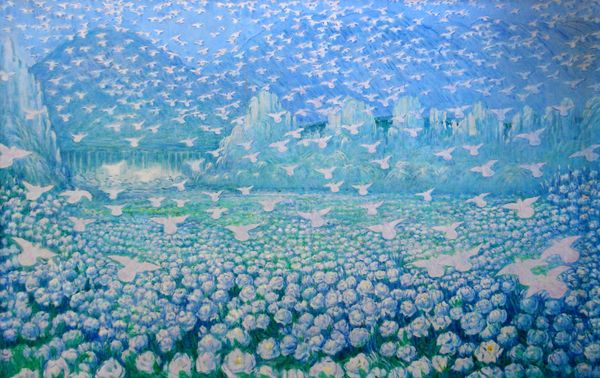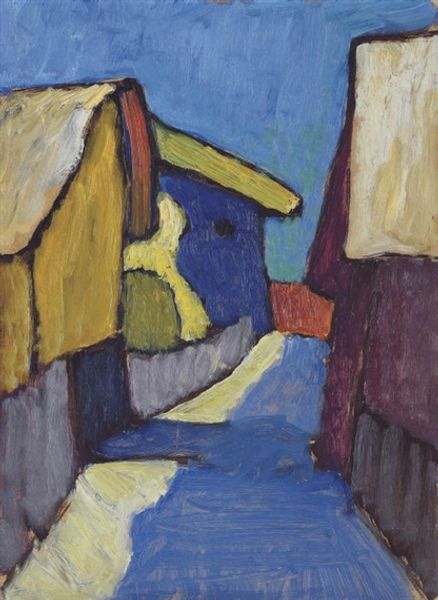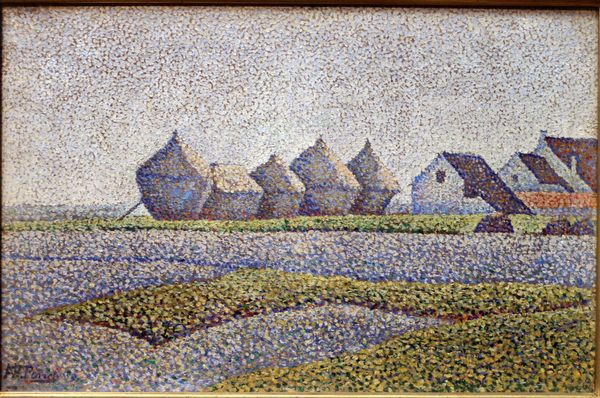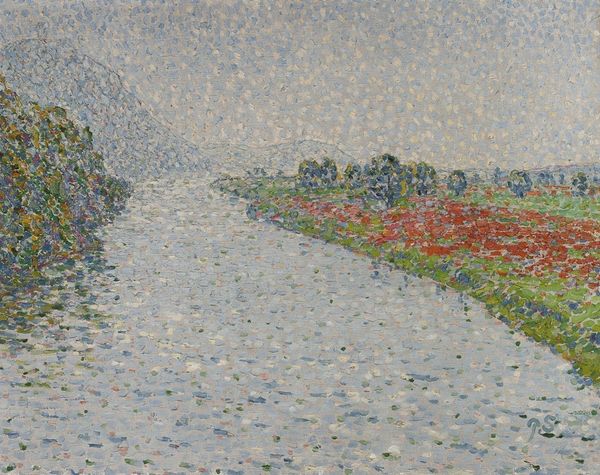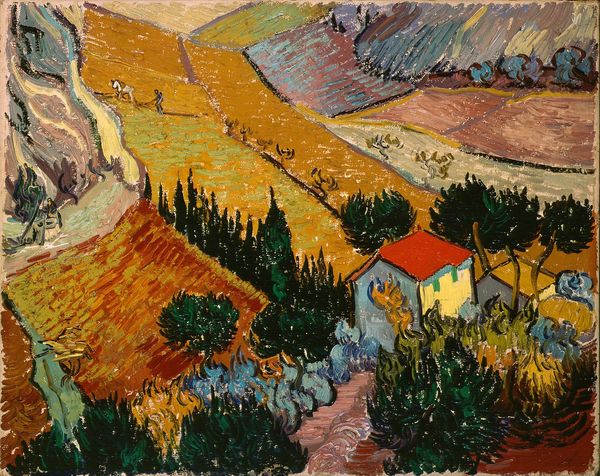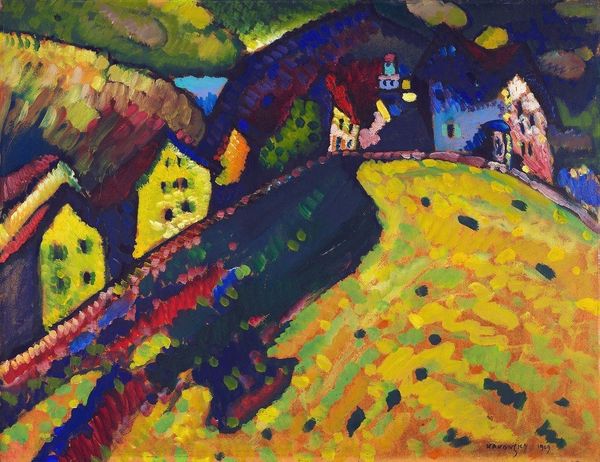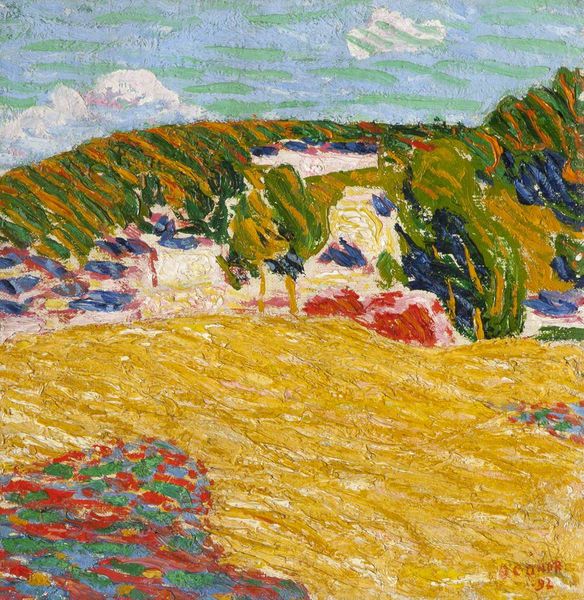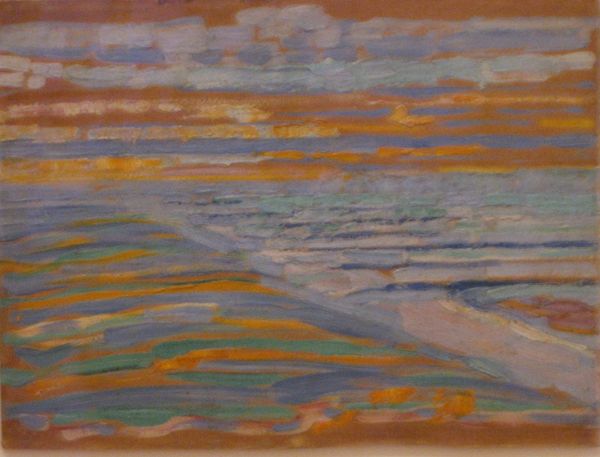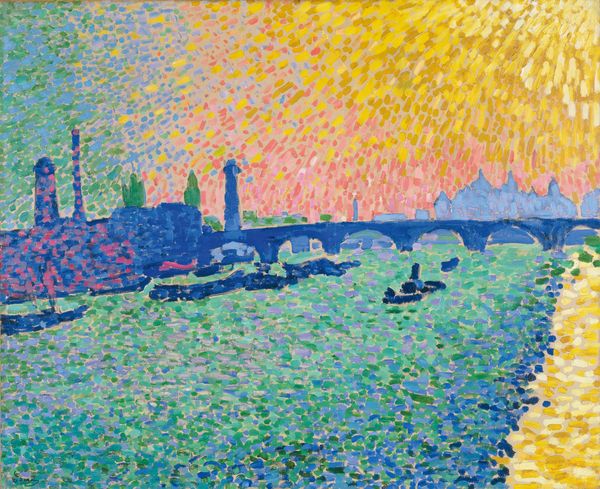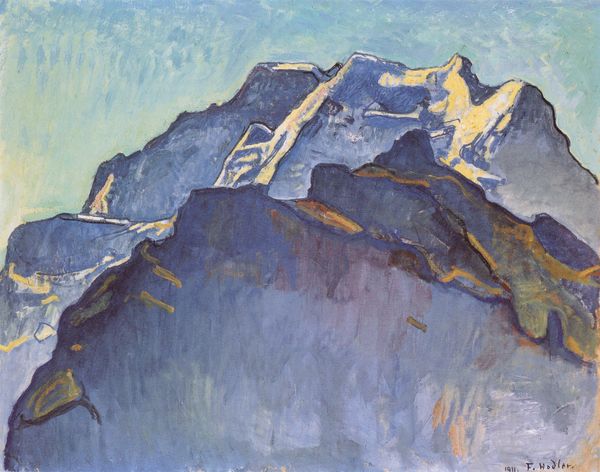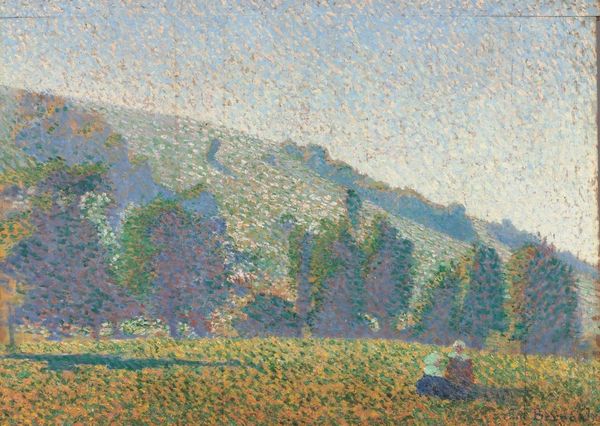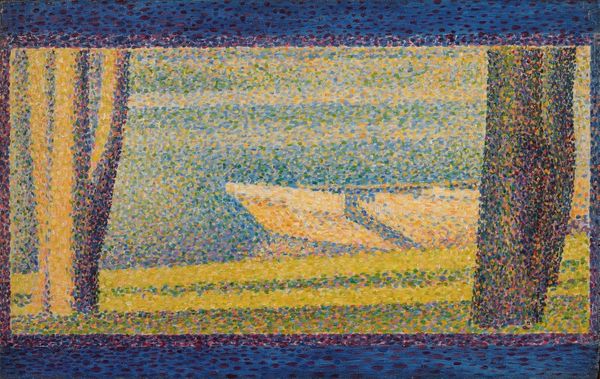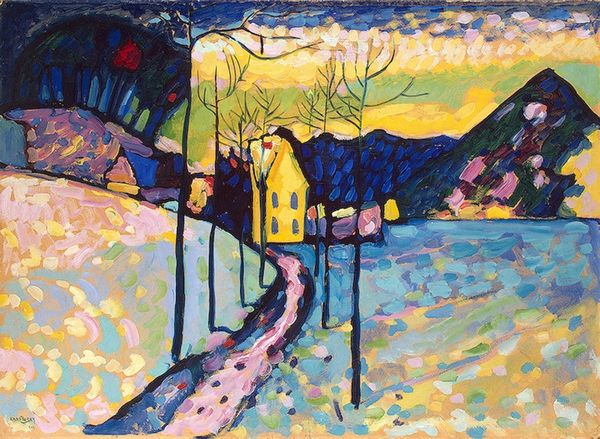
oil-paint
#
impressionism
#
oil-paint
#
landscape
#
oil painting
#
cityscape
#
post-impressionism
#
watercolor
Copyright: Public domain
Curator: Before us, we have Léo Gausson's "Les toits pointillés", created in 1886. It's an excellent example of post-impressionist technique, particularly the use of pointillism to capture the light and form. Editor: The rooftops seem to hum with life! There’s a vibrancy that contradicts the stillness of the architectural forms. I’m immediately drawn to how the mosaic of colors creates depth. Curator: Absolutely, the cityscapes and landscapes by painters of this era capture an important chapter in Parisian art. Gausson himself was not only inspired by Pissarro and Seurat, he captured some of the radical ideas of his time by showing us images free of an exclusive interpretation or perspective, but, rather, multiple view points, showing many truths co-existing in harmony. Editor: Yes, and those little dots! Looking closely, one appreciates Gausson’s scientific method of creating visual mixes of color on the canvas, relying on the viewer’s eye to blend the colours and light rather than premixing colours before applying them on the canvas. This work becomes almost hyper-real, the houses morph into optical illusions. Curator: Exactly! Think of the socio-political context, the push and pull between industrialisation and the desire to reclaim rural space... Even Gausson's anarchist leanings! In essence, art became a social project of visual harmony. Editor: You see harmony. I see organised chaos! Each point, considered on its own, means little, but together they suggest shape, texture, even shade. The brushstrokes are not about direct representation but abstraction in plain sight. Curator: Well, let’s say this organized chaos brings a message about unity and complexity, how it challenges the established, dominant views of art, society and freedom... Editor: It's fascinating how, in the dance of those little points, a world of debate takes place about the artistic and social discourse of that time... Curator: It is truly a privilege to examine how Gausson was advocating, with his own colourful approach, a better way to co-exist together. Editor: And perhaps we too, today, learn that different viewpoints contribute to one common and interesting picture.
Comments
No comments
Be the first to comment and join the conversation on the ultimate creative platform.

